
The Green Bridge is a bridge in the historical center of St. Petersburg, which is one of the most famous and popular bridges in the city.
The green bridge spans the Moika River along the axis Nevsky Prospekt (is part of the avenue) and connects the Kazan and 2nd Admiralty islands.
The name of the bridge "Green" comes from the color of its coloring-green, which was given to the bridge when the bridge was wooden (1735).
In addition to the Green, there are several colored bridges across the Moika in St. Petersburg, and an interesting story is connected with them. Initially, there were fourof them : Yellow (now Singing), Red, Blue and the Green Bridge itself. Since the bridges were of the same type and were located close to each other, it was difficult for residents to distinguish them and people often confused the bridges. For the convenience of orientation, it was decided to divide the bridges using color.
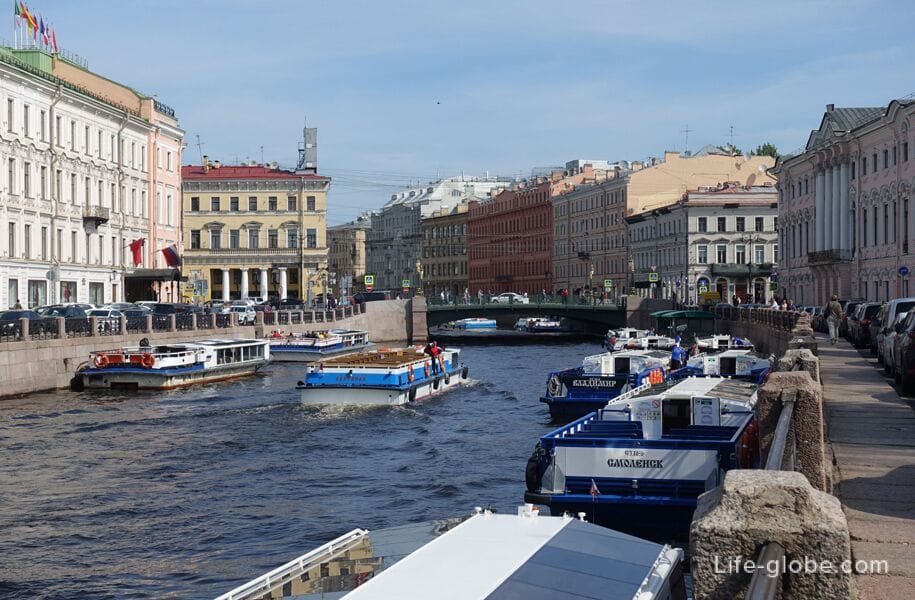
The green bridge has a total length of 30 meters and a width of 38.6 meters.
The bridge is a single-span metal structure of an arched structure. The superstructure consists of a cast-iron arch and a unloading reinforced concrete arch. The cast-iron superstructure consists of 24 rows of double-hinged arches, each of which in turn consists of 7 cast-iron tubes connected by bolts both to each other and between the tubes of neighboring arches. A monolithic reinforced concrete arch is arranged on top of the cast-iron arch of the bridge.
The abutments of the bridge are extended from Nevsky Prospekt into the riverbed, they are massive, stone, on a pile base, lined with granite.
The pattern of the cast-iron railings of the bridge repeats the pattern of the Moika River fence.
On the bridge, on granite pedestals, there are four (two on each side) metal decorative floor lamps with hexagonal lanterns.
The color of the bridge is green with golden.
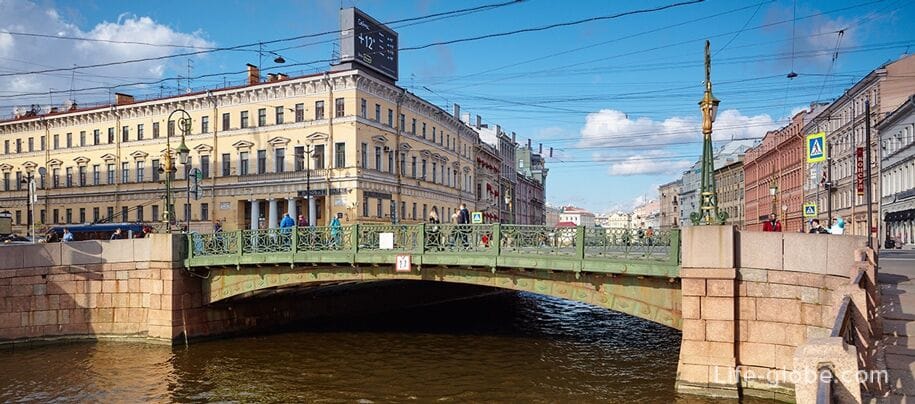

The Green Bridge is a roadway and pedestrian.
Pedestrian sidewalks are located on both sides of the bridge.
The roadway of the bridge is separated from the sidewalks by a granite side stone and a simple metal fence with granite bollards.

The Green Bridge offers beautiful panoramic views of the Moika River, the river embankments and the Red Bridge, located downstream from the Green Bridge.
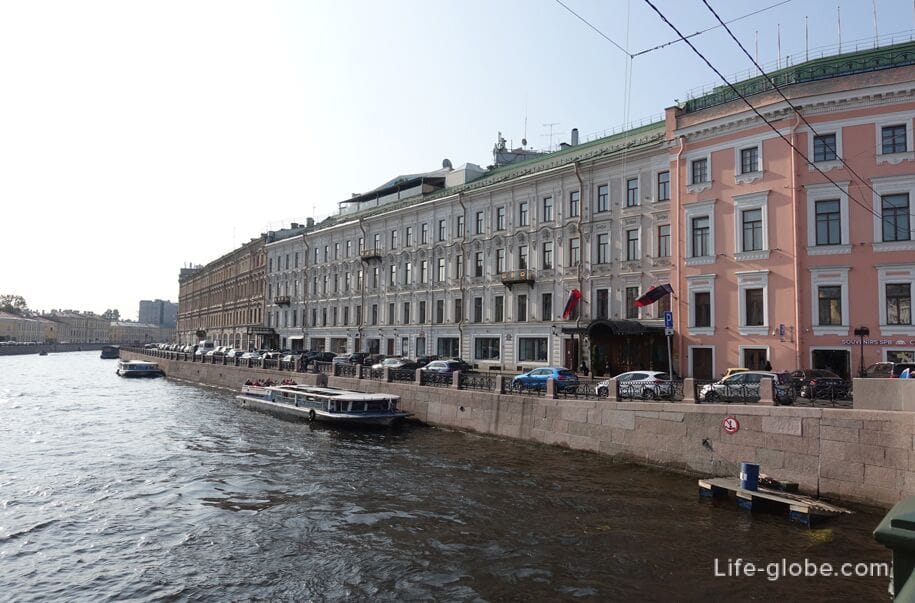

Near the Green Bridge there are such attractions as: the house-palace of the Eliseevs with the 5-star hotel "Talion Imperial Hotel" link to the hotel (Nevsky Prospekt, 15), the Neumann House (Nevsky Prospekt, 18), Stroganov Palace - now The Russian Museum (Nevsky Prospekt, 17) and the house of the Dutch Reformed Church (Nevsky Prospekt, 20).
Photo of the house-palace of the Eliseevs
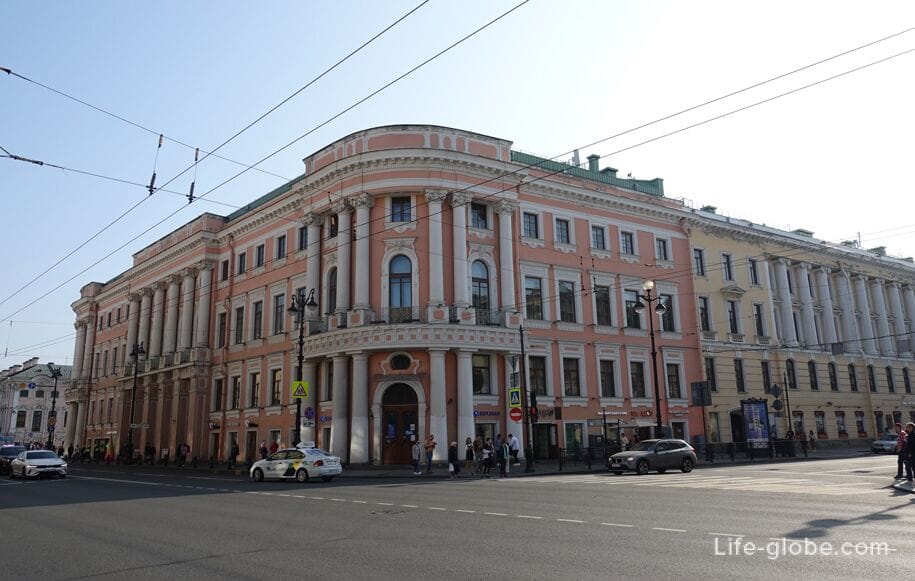
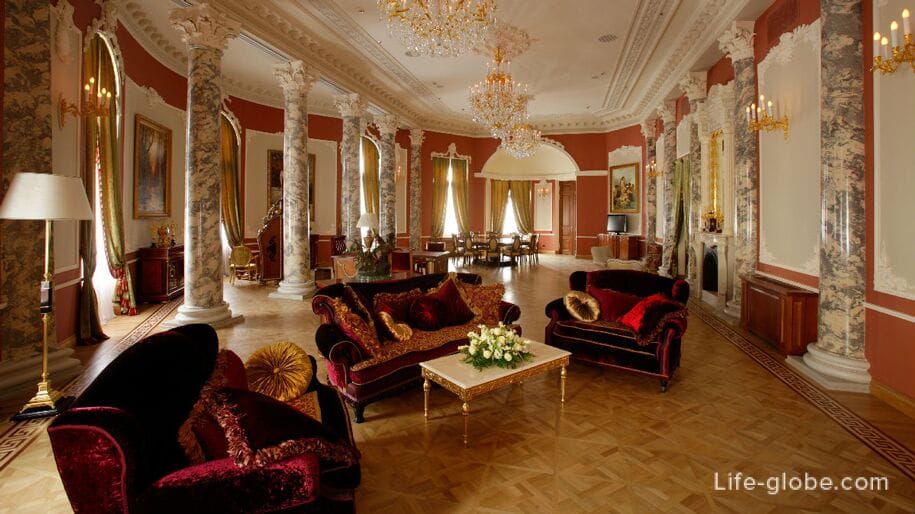
Photo of the Neumann house
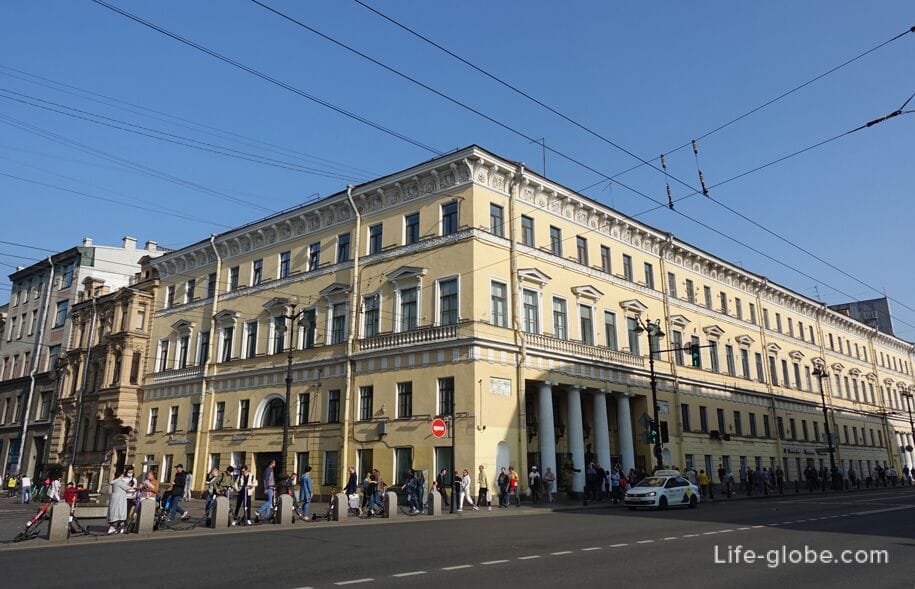
Photo of the Stroganov Palace
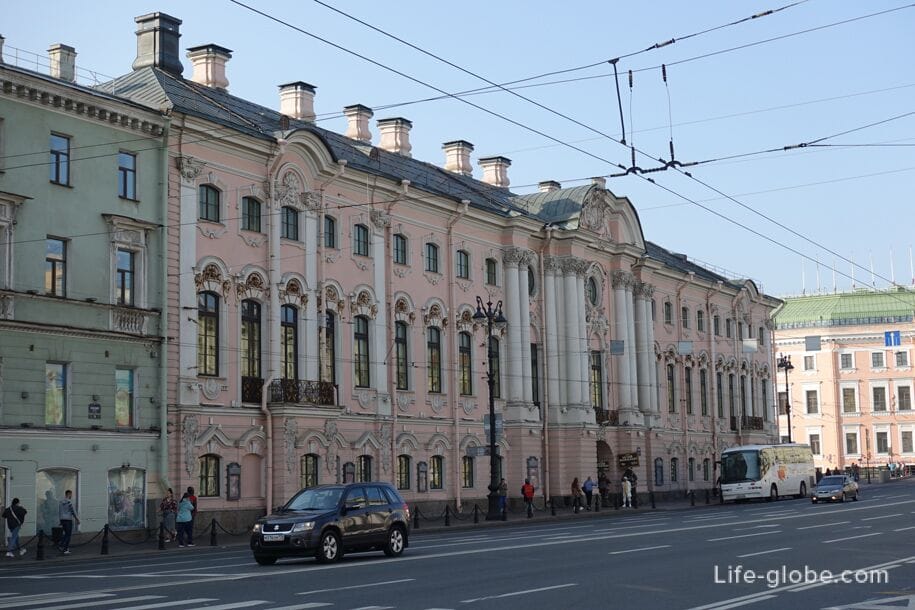
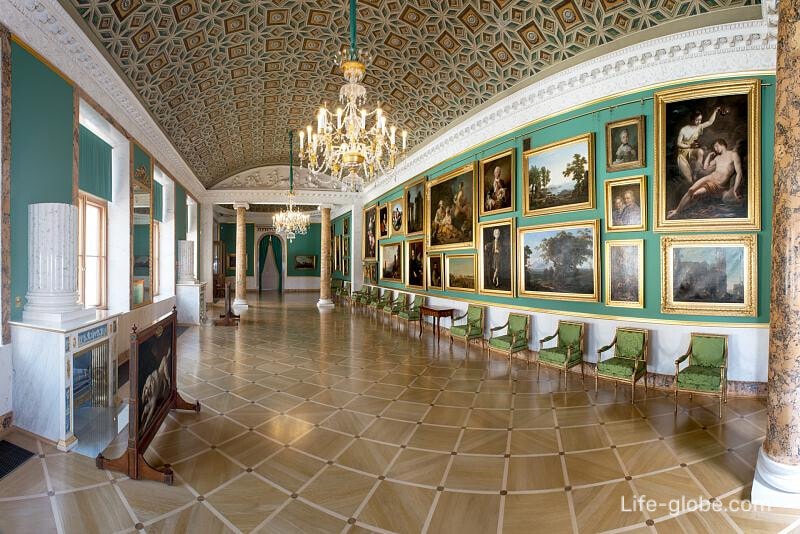
Photo of the Dutch Reformed Church
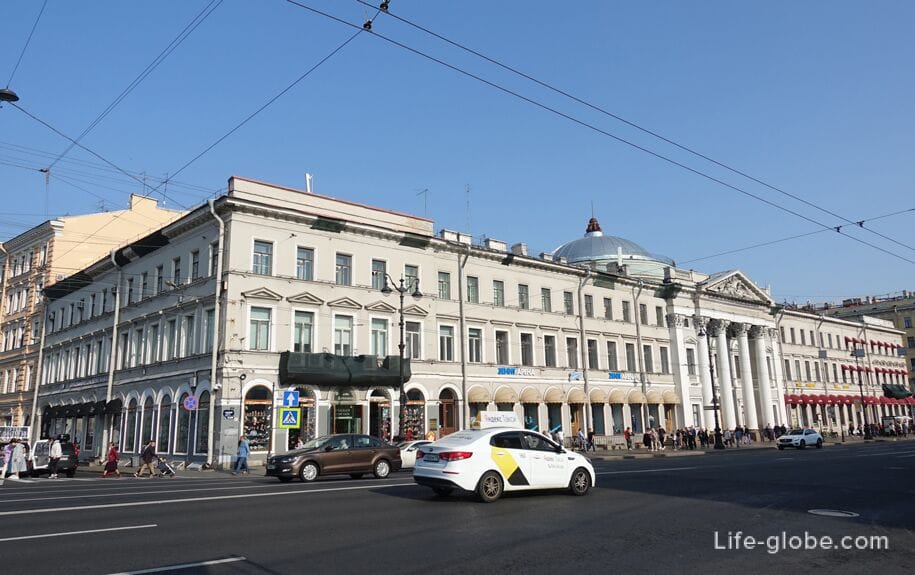
The first wooden drawbridge across the Moika at this place was built in 1716-1717. Until 1726, the border of the city passed over the bridge.
In 1735, the crossing was repaired, painted green and officially given the name "Green Bridge". In 1768, the bridge was renamed "Policeman" - according to the Main Police Master's Office, located nearby, on the Moika Embankment, and the house of the police chief General Chicherin on Nevsky Prospekt. In October 1918, the bridge received the name "Narodny" (in the spirit of that time), and on January 13, 1998, the bridge was returned to its historical name - "Green Bridge".
In 1777, the existing wooden bridge was rebuilt into a three-span, beam system, with wooden spans on stone supports.
The cast-iron single-span bridge was built in 1808 according to the project of the engineer and architect of Scottish origin V. I. Geste.
In 1842, due to the increased traffic on Nevsky Prospekt, the bridge was expanded according to the project of engineer A. D. Gottan.
In 1904-1907, in connection with the laying of tram tracks on Nevsky Prospekt, the bridge was rebuilt and expanded according to the project of engineers V. A. Bers, A. L. Stanovoy and A. P. Pshenitsky and architect L. A. Ilyin. Then the bridge supports were expanded, five rows of box arches were added on each side of the superstructure, the facades were decorated with overhead ornaments, and instead of cast-iron lampposts, gilded iron candelabra were installed, on which hexagonal lanterns were placed.
Later, the bridge was restored.
Today, the Green Bridge is registered by the Committee for State Control, Use and Protection of Historical and Cultural Monuments of St. Petersburg.

Upstream of the Moika River from the Green Bridge is the Singing Bridge.
Coordinates of the Green Bridge: 59°56'10"N 30°19'11"E (59.936111, 30.319722).
Nearest metro stations: "Admiralteiskaya", "Nevsky Prospekt" and "Gostiny Dvor".
All accommodation facilities in St. Petersburg, including in the city center and more remotely from it, can be viewed and booked here